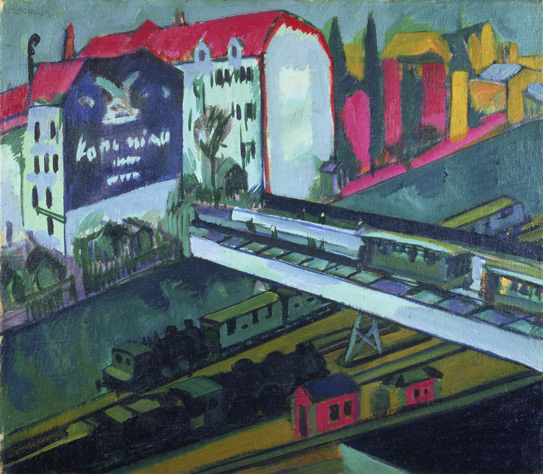Fr : version française / En: english version

Crucial therefore nodal
All the world's major cities have developed their urban transit systems like New York and Tokyo. Is the provision of reliable, cheap, efficient and non-polluting public transportation the alpha and omega of urban development?
- Tram and railway, seen from the artist's studio
- Ernst Kirchner
Ernst Kirchner
A German painter born in Bavaria in 1880, he studied architecture but became interested in engraving and painting. In 1905, with three fellow painters, he founded the group Die Brücke (the bridge) which spawned the Expressionist movement. Influenced by both the Classical German artists (Cranach, Dürer et al) and modern painters (Munch, Gauguin, Van Gogh), his work was focused on exaggerated colors and expressive lines emphasizing spontaneity. Kirchner enlisted in the army in the First World War but was soon demobilized for health reasons. He spent frequent periods in a sanatorium in Davos, Switzerland, the country which was to be his home until his death. His work started to draw public attention in the 1920s with a series of one-man shows and group exhibitions, and was bought by institutions. However, the Nazis branded him a "degenerate artist" and destroyed or sold more than 600 of his works. Ernst Kirchner committed suicide in 1938.










